“Sonic” drilling is a relatively new exploration technique that has some particular advantages for certain applications. The method provides continuous (disturbed) samples in a wide range of soil types, including soils with large particles that preclude sampling by many other techniques. The drill stem and sampler barrel are vibrated vertically at frequencies between about 50 and 180 Hz (hence the name sonic) such that the sampler barrel normally advances by slicing through the soil. The following photos illustrate the equipment involved.
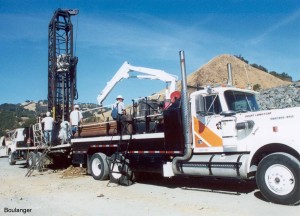
The sonic drilling rig is in the background. The truck in the foreground is equipped with a small crane for handling the large sampler barrels and drill stems.

The crane is supporting the sampler barrel while it is being connected to the vibratory drill head. Notice how the drill head is rotated on the mast to facilitate the quick connecting and disconnecting of sampler barrels and drill stem.
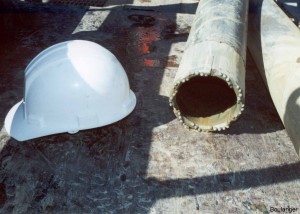
Sampler barrels come in different sizes, like this 6-inch diameter one. The end of the barrel is a cutting bit with tungsten carbide bullets. The sampler barrel is 10-feet long with an additional 10-feet of “slough” barrel above it. This 20-foot long section connects on the end of smaller diameter drill stems.
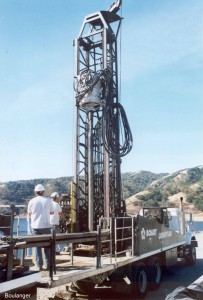
The sampler barrel is mounted to the drill head and ready to begin drilling. The driller operates the vibratory head from the controls to the left of the mast. The driller controls the eccentricity of the rotating masses in the vibratory head and the vibration frequency.
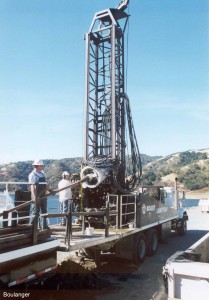
Additional drill stem is being connected to the drill head, and then the drilling will be advanced through the next depth interval. This hole was also cased, with the casing obviously being larger than the sampler barrel. The sampler barrel was always kept less than 20 feet past the end of the casing. Otherwise, if the entire sampler barrel got below the casing, then caving soil (particularly large particles) could bind up against the smaller diameter drill stem and lock the barrel in the ground.
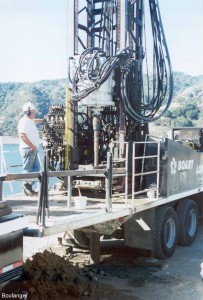
The driller continues drilling until the sampler barrel has advanced its full 10-foot sampling interval, or until the barrel no longer advances with the maximum vibrator effort. Advancing the sampler can be difficult in stiff/hard clayey soils, whereas it is normally easier to penetrate cohesionless soils.
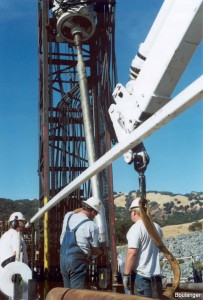
The sampler barrel has been pulled from the hole with a full 10-foot long sample. Plastic tube bags are being used to catch roughly 2.5-foot-long sections of the sample. Once the 10 feet of sample have been bagged, the additional slough material in the barrel is discarded. The sampler can often cut through large soil particles (e.g., cobbles), with the resulting sample providing a valuable view of the soil stratigraphy that other techniques could not provide. Like all drilling techniques, there are many nuances affecting sample recovery and drilling effectiveness that the field engineer must learn about.
